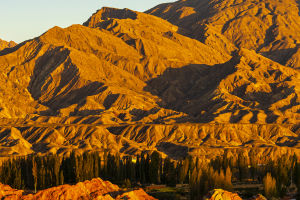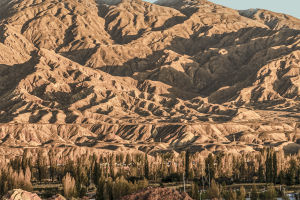Generally speaking, we consider an object to be white when it reflects 80% or more of all wavelengths within the visible spectrum.
The whiter the substance the more light it can reflect and the less likely it is to warm up.
Common scientific knowledge has been passed down from generation to generation in the form of life lessons, as people in tropical regions often paint their houses white, and the white buildings on the Greek island of Santorini are not just for aesthetic reasons.
In 2021, Purdue University developed an ultra-white paint containing barium sulfate particles with a 98.1% reflectivity.
In September of the same year, it was entered into the 2022 edition of the Guinness Book of World Records, rightfully becoming the whitest paint to date.
When used on roofs and sidewalks, the paint can keep outdoor surfaces more than 4.5°C cooler than the ambient temperature, thereby reducing the need for air conditioning and mitigating the urban heat island effect, which can also work in winter.
If you cover 1,000 square feet of the roof area with it, we estimate that you could get up to 10 kilowatts of cooling power. This is more cooling than most air conditioners.
Researchers even say that just 0.5-1% of the Earth's surface could be coated with this paint to reverse the global warming trend.
More recently, the same scientists have developed a new, thinner, lighter formulation, or the world's whitest paint, 2.0, which also works to lower surface temperatures.
When 1.0 came out, to achieve adequate levels of radiant cooling, the coating needed to be at least 0.4 mm thick, which was perfectly tolerable for structures such as building roofs.
But when looking at objects with precise size and weight requirements, such as cars, trains, and airplanes, where coatings need to be thinner and lighter, it was time for 2.0 to come on the scene.
2.0 is a nanoporous coating that requires only 0.15 mm to achieve 97.9% reflectivity, nearly the same as 1.0's 98.1%.
2.0 is also highly porous on the nanoscale, and because it is less dense and thinner, it is 80% lighter than 1.0.
The lighter 2.0 will be used in a variety of lightweight scenarios, lowering surface temperatures by about 5.6°C when sprayed on the exterior of an airplane, car, or train.
The difference in reflectance between the whitest paint 1.0 and 2.0 is practically insignificant.
After all, it is not the goal of scientists to break the record of the whitest paint, it is the goal to curb global warming and save energy.
With the gradual development of technology, we can always wait for the day when global warming is reversed.


